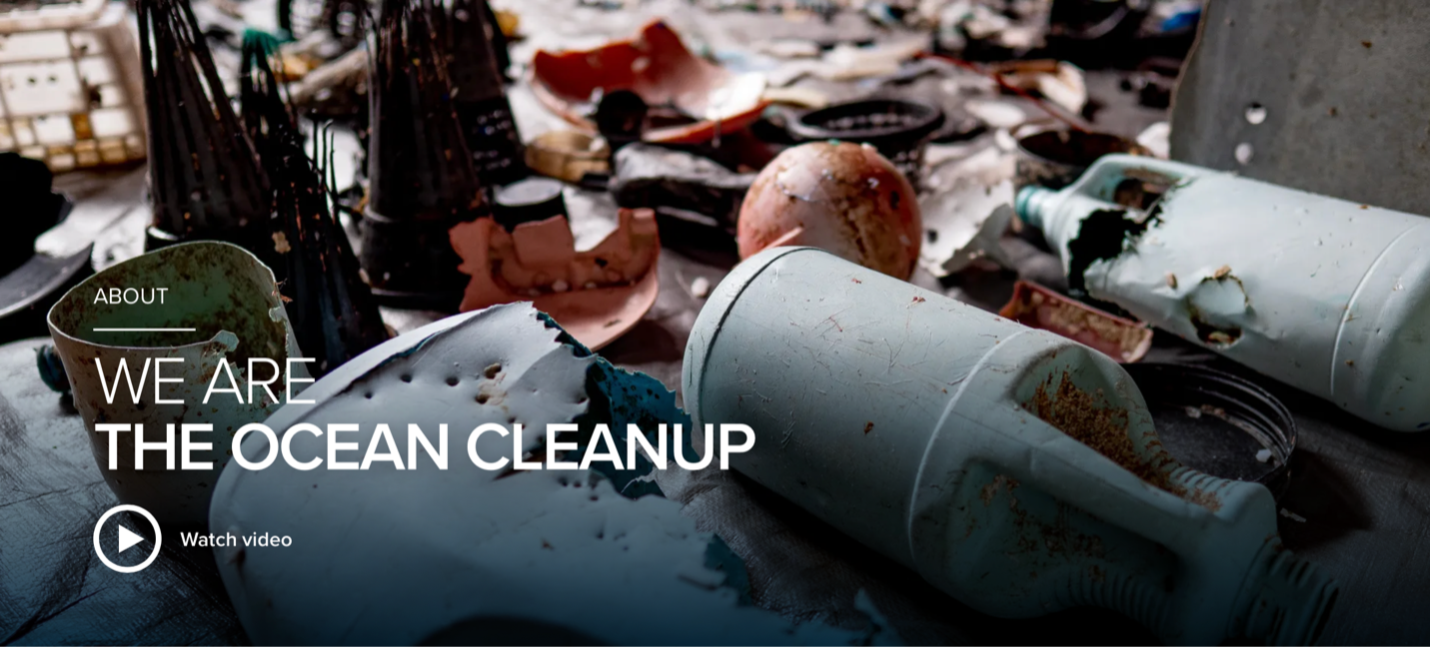Organization Spotlight : The Ocean Cleanup
Love, Care and Consciousness are built into our DNA at DrTung’s. It’s a concept we weave into every part of our business model — from our products, to our consumers, to our team, to our planet and to all sentient beings. There are many, many organizations working diligently to make this planet a better place. Some of these organizations have touched our hearts in very deep ways. To share the amazing work from a few of our favorite groups that we support through donations, we’re spotlighting one incredible organization each month throughout the year.
The 9th organization in our series is…
The Ocean Cleanup
The largest cleanup in history!
The Ocean Cleanup is a non-profit organization developing and scaling technologies to rid the oceans of plastic, with a global initiative to remove 90% of floating ocean plastic by 2040.
“We plan to do this by cleaning up the legacy plastic – the plastic already floating in the ocean – and by stopping the sources of plastic flowing into our oceans.“1
How it started…
“In 2011, then 16-year-old Boyan Slat was diving in Greece and was surprised to see more plastic than fish. Together with a friend he explored oceanic plastic pollution and the difficulties of cleaning it up for a high school science project. Boyan remained fascinated by the problem and continued working on his passive clean-up concept during his freshman year at university. This eventually led him to start The Ocean Cleanup that was founded in 2013.” 2
“Big problems require big solutions”
Every year, millions of tons of plastic enter the oceans and the majority ends up accumulating in ocean gyres (large systems of rotating ocean currents) creating five ocean garbage patches, the largest one being the infamous Great Pacific Garbage Patch.
The plastic that is already floating in the oceans is not going away on its own. Cleaning it up requires a two-fold solution: 1) remove the legacy plastic from the oceans and 2) halt the trash that’s entering the ocean from rivers.
Cleaning the Ocean
The Ocean Cleanup is developing cleanup systems that can clean up the floating plastics caught swirling in the ocean garbage patches. The cleanup system is designed to first concentrate the plastic by creating an artificial ‘coastline’ that is made up of a long U-shaped barrier that guides the plastic into a retention zone, thus allowing it to be effectively collected and removed. The gathered plastic is then brought back to shore for recycling.
“Modeling predicts we need around 10 full-size systems to clean up the Great Pacific Garbage Patch. After fleets of systems are deployed into every ocean gyre, combined with source reduction, The Ocean Cleanup projects to be able to remove 90% of floating ocean plastic by 2040.”3
Intercepting the Rivers
The Ocean Cleanup has developed the first scalable solution to efficiently intercept plastic in rivers before it reaches the oceans. By tackling 1000 rivers around the world, they expect to halt 80% of riverine plastic from entering the oceans in five years from rollout.
Rivers are the main source of ocean plastic pollution, carrying waste from land to the ocean. While there are over a hundred thousand rivers flowing into the ocean, 80% of the plastic flowing to the ocean is coming from 1000 rivers (1%). Focusing on these rivers, The Ocean Cleanup currently has 8 interceptors deployed in 5 countries — working to stop the flow BEFORE it enters the ocean. The Interceptor toolbox includes:
- Interceptor™ Original — this vessel is strategically placed in the river so the waste flowing with the current is guided towards the opening in the catamaran design and onto the conveyor belt.
- Interceptor Barrier — a standalone floating barrier anchored in U-shape around the mouth of a small river that intercepts the trash on its journey.
- Interceptor Tender — a small barge that uses a conveyor belt to scoop up the trash from the Barrier and offload it into a dumpster onshore.
- Interceptor Trashfence — a chain-link fence anchored to the banks and bed of a river, capturing waste for later extraction.
The takeaway
Plastic pollution in the world's oceans is one of the biggest environmental issues of our time, impacting nearly 700 marine species. Floating plastics trapped in the patches will keep circulating until they break down into smaller and smaller pieces, becoming harder to clean up and increasingly easier to mistake for food by sea life. If left to circulate, the plastic will impact our ecosystems, health, and economies for decades or even centuries.
You can read more about Ocean Cleanup on their site or follow them on social media. If their work resonates with you, we encourage you to share their story with your friends and family. You can also get involved by donating here.
As always, do what resonates with you. One thing we can all do is to take a few moments each day to take care of ourselves and cultivate positive energy. When you feel positive, you share that feeling with those around you — it’s contagious (in a good way). Each of us adding positivity to ourselves and spreading it to those around us adds to the collective Love, Care and Consciousness of humankind. Together we can make a difference to each other, to our environment and to all sentient beings.



By Penny Westergaard 09/30/2022 10:30:17
Thanks for another inspiring article! The OceanClean Up is an absolutely incredible reflection of how youth-in-action with a determined mission can solve a global issue. Our heartfelt thanks to The Ocean CleanUp Team!!!